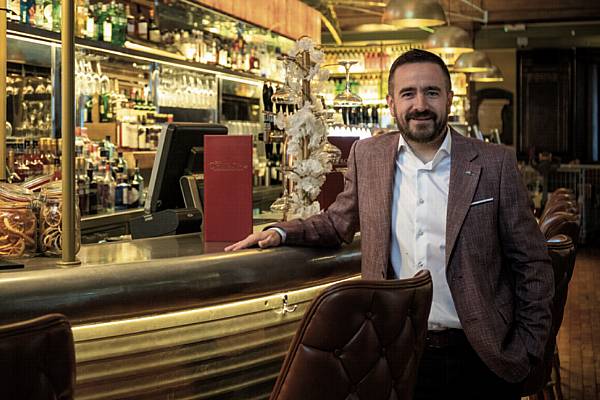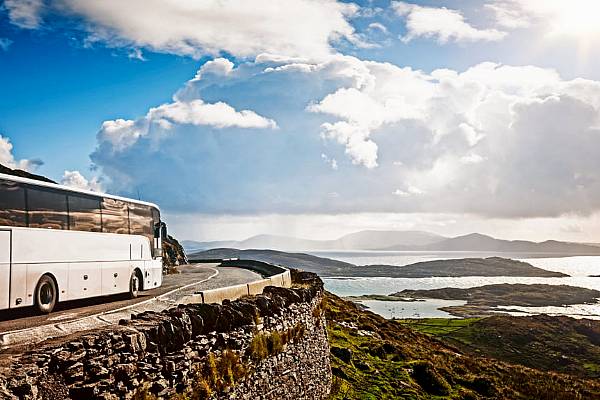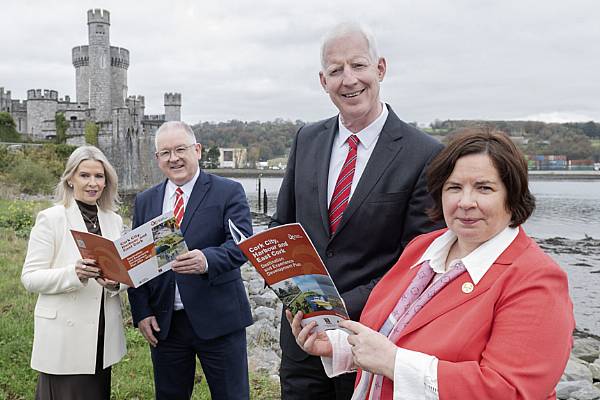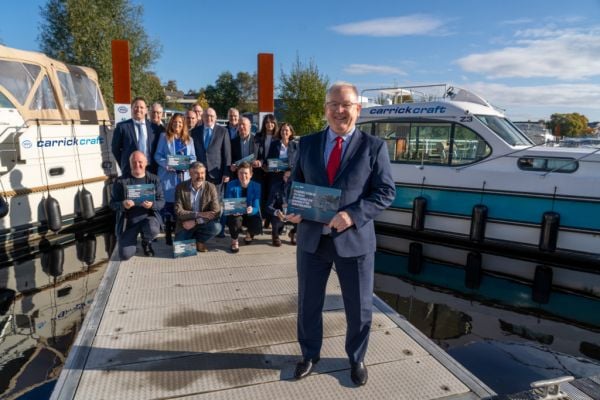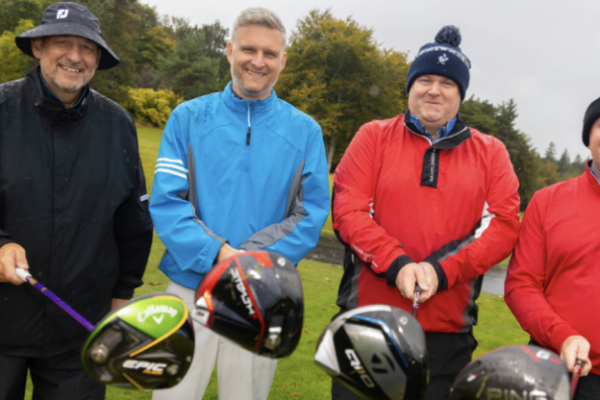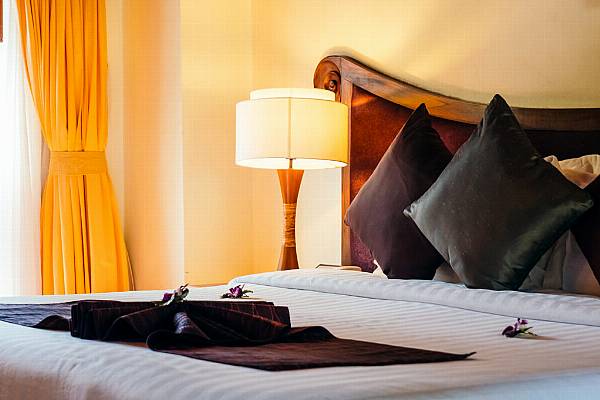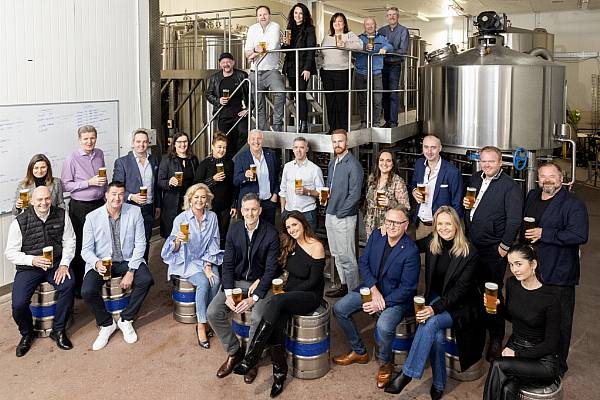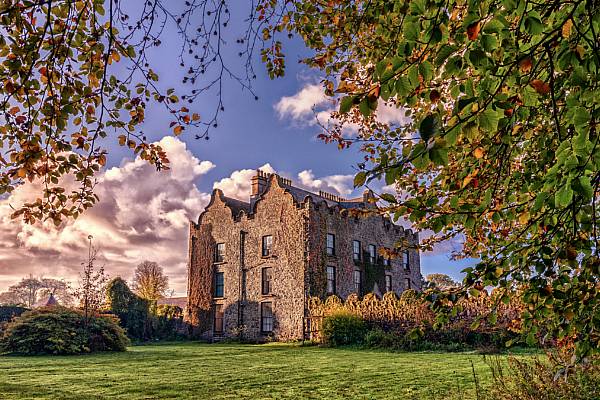General manager Darren Moore talks to Hospitality Ireland about changes to The Church, first built in the 18th century.
This article was originally published in the Summer 2024 issue of Hospitality Ireland Magazine, in July of 2024.
The Church cafe-bar and venue has recently seen an extensive investment in terms of refurbishment, with over €1.35 million invested in the main bar, gallery, Bar 1701, conservatory, garden, and back of house, with planning permission for a new conservatory on the Mary Street (north side) of the building, which the team hopes to build in Q1/Q2 2025, at a further cost of €1 million.
So, please tell us about the additions to the Church.
Over the last two years, all areas of the Church – including the main bar, cellar bar, Bar 1701, the gallery, and the garden have been renovated and completely refurbished whilst respecting the integrity and preservation order on this magnificent building.
Included in the €1.35 million investment, we also recently launched a new conservatory, on the south side of the building, that looks out onto the recently refurbished Wolfe Tone Park, which has given us a bright, spacious area that gives great flexibility for our day-to-day trade, as well as giving the option for a private space for 50-60 guests.
This is a significant investment. Why did you decide to undertake it?
We wanted to improve every aspect of our customers’ experience and ensure that we complimented the stunning surroundings of this beautiful building with the very best fit-out whilst also facilitating the increased demand we have experienced over the last number of years.
The changes in layout have given us increased capacity for both dining and drinks, with the addition of the extension, giving us more capacity, and a smaller private space for corporate functions.
We feel we can grow the business significantly over the next number of years whilst ensuring the setting for our customers is comfortable and stylish, and of the highest standard.
Please tell us about the Church – the history, etc.
Built at the beginning of the eighteenth century, the building boasts many outstanding features and significant cultural and political associations, such as the Renatus Harris-built organ and spectacular stained-glass window. The building ended its religious period 1964, lay derelict until 1997 – after which it was extensively renovated – and opened in 2005, as John M. Keating’s Bar.
In September 2007, the building was acquired by new owners and renamed. Today, the custodian of the building, Brendan Flynn, continues the upkeep and sensitive maintenance of the Church and is fully invested in its cultural and historical significance, as well as its place in the modern fabric of Dublin’s complex social scene.
Some other interesting facts: George Frideric Handel used the church’s organ to practise while composing his famous Messiah; Arthur Guinness and his wife, Olivia, married in St Mary’s Church in 1761 – they subsequently had 21 children, ten survived to adulthood; Theobald Wolfe Tone and Seán O’Casey were baptised in St Mary’s; John Wesley, founder of the Methodist Church, gave a sermon in the church; and among the many ceremonies celebrated in St Mary’s, there have been 25,000 baptisms, 5,500 marriages, and 18,000 burials.
What are the current challenges – staffing, etc.?
We are going through a challenging time for the industry. Costs have increased significantly over the last number of years, and it’s perhaps been the biggest challenge for the industry, and will continue to be for the foreseeable future. There has been some respite, with the cost of utilities coming down slightly over the last number of months, however, with a premises of our size, it’s still a significant cost.
Food costs have also risen significantly over the last number of years, and this has been a challenge, however, we have introduced new procurement software to help with purchasing, along with designing menus that keep waste down and the GP at a sustainable level.
We have a really good staff retention rate and a very strong core team, who have all been with us for a number of years, which has helped us bring in new staff. The challenge, I feel, is for the back of house, when recruiting experienced and skilled chefs. We have built a great team over the last number of years and held on to them, but it has been a challenge finding them. I do think changes to work practices, hours, pay, and a better work-life balance that have been happening over the last couple of years will encourage more people to enter into the industry.
What do you see as the opportunities?
We see great opportunities in developing our corporate offering. With the advent of work from home, companies are always looking at how they can keep the team engaged, working together, and have a social aspect to the workplace. Dublin is also a top destination for business tourism, with a fantastic team at Fáilte Ireland and the Dublin Convention Bureau working tirelessly to promote Dublin as a top destination for conferences and events.
As visitor numbers get back to the record levels of 2019, we feel we are well placed to attract a larger amount of visitors as one of the most unique venues in the world. We already attract over 600,000 visitors a year, and we want togrow this to over a million over the coming years.
I think hospitality has a unique opportunity to be the one place where people will go to enjoy face-to-face human interaction. So much has moved online, but hospitality has a huge opportunity to be that place where people know they will get friendly and personal service – not a chatbot, call centre, or website.
How are people’s going-out habits changing, i.e. what they drink, eat, when, etc.?
I think we are seeing some significant changes in Ireland as to how people socialise. Food has become a bigger part of any social event. Whether a casual friends’ meet-up or a corporate function, customers are more mindful of their alcohol intake.
We have found that, with corporate clients, the food offering is the most important part of the night, followed by the entertainment, and we have also seen the range of 0.0 drinks now available, along with low-alcohol options, grow massively over the last 12 to 18 months. This is down to customers’ changing drinking habits and more emphasis on their own health and well-being, and this will continue to grow.
I think we have seen the frequency of visits to hospitality for domestic customers decrease, with visits centred around events like concerts or sporting events and special occasions. The challenge is to ensure your offering meets the needs of these customers by creating a great customer experience every time. These customers are also moving towards more premium offerings, with premium spirits and cocktails. As it’s a less frequent visit, they are more likely to treat themselves and spend more on that occasion.
Please tell us about your own background – where you grew up, studied, etc.
I’m originally from Neilstown, Clondalkin. Sport would have played a big part of my upbringing, and I still play over-35s’ football and coach an under-18s’ team for my local club, which my three sons play for. When I finished secondary school, I undertook a degree course in computer science. I learned quickly this was not for me and, after a year, decided to go into hospitality full time.
What first drew you to the industry?
The industry is probably in my blood. My father has worked in hospitality for over 50 years and still does, in a hotel. My brother also worked in the industry, and it’s how I got my first start – part time, a few hours on a Saturday morning as a lounge boy in a small bar in Clondalkin Village, the Central Bar, alongside my brother, at the very tender age of 14.
I stayed in the industry on a part-time basis through my school years, and then a year of college, before moving full time into the bar trade when I was around 19. I always enjoyed the social aspect to the job – the chat with the customers, and having the craic at the counter.
What was your first big role?
I had worked in the Kestrel House for a number of years as a bartender, which was then owned by Larry Kelly, who soon after sold the premises for a record deal at the time, and received a record for a pub at the time – I think it was €6.7 million. The new owners promoted me to duty manager after a couple of months, working with a very good general manager at the time, Darren Kavanagh. When Darren moved on, I was made general manager. I was still quite young – only 25–and it was a huge step up, but I enjoyed the challenge.
What was that like?
It was a challenge. The Kestrel was a very busy premises, and we had around 50/60 staff. Looking back, there is probably a lot I would do differently, but that’s what experience has done for me – I continue to learn and change on a daily basis, and the trade has changed a lot over the last couple of decades.
What makes a great bar?
The staff! I think – no matter what the premises is like – the drinks, the food, the entertainment – all of the things that combine to make an experience – it’s the staff that make it an unforgettable one.
If we look at why people go to bars, it’s the social aspect, and always will be. A great bartender, server or manager can be the difference, and it’s what separates the industry from all others. It’s why I’m so confident in the future of the industry and excited about the changes over the next number of years.
Please tell us about your investment in the local community.
We have always taken the role of the Church in the local area very seriously. The Church has been a part of the area and community for over 300 years, and it’s something that we are very eager to continue. We have been working with several agencies – such as DublinTown, Dublin City Council, and other local stakeholders – to improve the local area for both people visiting the city and people living locally.
This has included the regeneration of Wolfe Tone Park and organising regular community and arts events in the park. We currently host a regular coffee morning for some of our active retired [residents] in our local community, giving them a chance to meet up, get information on relevant issues, workshops, storytelling, and singalongs.
We provide soup for the Simon Community soup run on a daily basis, also, and have been doing so for the last eight years, and we’ve been involved with local schools over the past number of years and do an annual cinema trip for over 300 students to the cinema every Christmas, for Mount Carmel Secondary School.
Any other plans on the horizon for the next year or so?
We have plans to add an additional extension to the north side of the building, on Mary Street. This will add additional capacity, but also add to the character of the street front and open up the building to the passing trade. This will be a substantial investment, which demonstrates our optimism in the trade and commitment to the area.
A big focus for us will also be making the business more sustainable, and we have set a target to get the business carbon neutral over the next five years. We have already made some very simple changes, but are working on a wider plan and accreditation, to ensure we play our part in making the industry environmentally sustainable.
